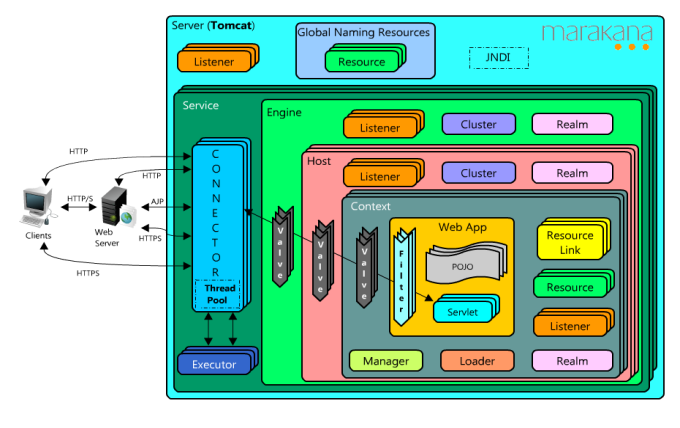honzeland 2010-10-22 22:41 еҸ‘иЎЁиҜ„и®ә
]]>
Valve and Filter:
"Valve" is Tomcat specific notion, and they get applied at a higher level than anything in a specific webapp. Also, they work only in Tomcat.
"Filter" is a Servlet Specification notion and should work in any compliant servlet container. They get applied at a lower level than all of Tomcat's
Valves.
However, consider also the division between your application and the application server. Think whether the feature you're planning is part of your application, or is it rather a generic feature of the application server, which could have uses in other applications as well. This would be the correct criteria to decide between Valve and Filter.
Order for filter: The order in which they are defined matters. The container will execute the filters in the order in which they are defined.
honzeland 2010-05-10 10:39 еҸ‘иЎЁиҜ„и®ә
]]>Key points:
- HTTP is a very general, scalable protocol. While most people only think of HTTP as including the GET and POST methods used by typical interactive browsers, HTTP actually defines several other methods that can be used to manipulate resources in a properly designed application (PUT and DELETE, for instance). The HTTP methods provide the verbs in a web interaction.
- Servers are completely stateless. Everything necessary to service a request is included by the client in the request.
- All application resources are described by unique URIs. Performing a GET on a given URI returns a representation of that resource's state (typically an HTML page, but possibly something else like XML). The state of a resource is changed by performing a POST or PUT to the resource URI. Thus, URIs name the nouns in a web interaction.
honzeland 2010-01-08 14:50 еҸ‘иЎЁиҜ„и®ә
]]>